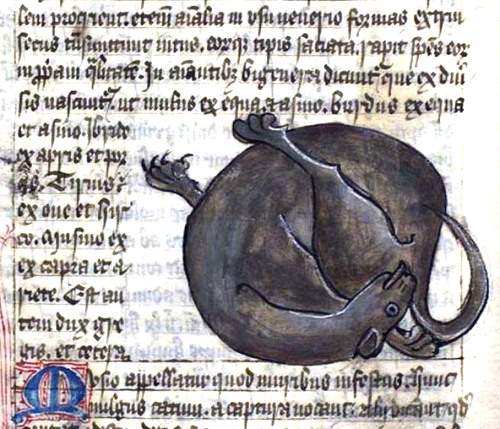This picture of cats interests me 😱👍😃. Because it is unusual; very unusual I’d say. So, what can be say about it that is also of interest!? Well, it is so unusual as to be….fake? 😱

Interesting points to note. Note: these cats are ‘autogrooming’.
- One of the ten has both hind legs in the air. This really is unusual. Have you seen that before. Perhaps the image has been photo-edited…
- Having observed the image for a little longer after seeing the cat with both hind legs in the air, I have decided that it is a heavily photo-manipulated picture.
- Let’s look at some other anomalies. Look at the hind leg in the air behind the cat nearest the camera. It belongs to a ginger tabby. I suppose it is meant to belong to the ginger tabby behind the cat nearest the camera but this is impossible as the positioning is all wrong. And also, that cat has another hind leg in the air! All wrong, I am afraid. That alone is enough plus the two-legs in the air cat on the left to tell me that this is a fake.
- This brings me nicely to Medieval times when the habit that cats have of grooming their bottoms led some senior Christians to believe that it was an example of cats behaving like heretics – anti-Christian or indecent behaviour. Although there is no evidence that in general this form of feline behaviour had a big impact on this superstitious belief. However, cats’ independent and elusive nature could have been symbolically linked to the perceived independence of heretics from the authority of the Church. Heretics were often viewed as rebellious, refusing to conform to the orthodox teachings and practices, much like how a cat was seen as independent and not easily controlled.

A bestiary is a type of medieval manuscript that describes various animals, both real and mythical, often accompanied by illustrations. Bestiaries were popular in Europe during the Middle Ages and were intended to provide moral and religious lessons through the allegorical interpretation of animals’ characteristics and behaviors.
Key Features of Bestiaries:
- Descriptions of Animals: Bestiaries typically include descriptions of a wide range of animals, including familiar creatures like lions and elephants, as well as fantastical beings like dragons and unicorns. The information in bestiaries often blended observation, folklore, and myth, leading to some fanciful or incorrect descriptions.
- Allegorical Interpretations: Each animal in a bestiary is usually accompanied by an allegorical or moral lesson. For example, the lion might be described as a symbol of Christ, and its behaviors would be interpreted in a way that draws a moral or religious parallel.
- Illustrations: Bestiaries are often richly illustrated, with detailed and sometimes imaginative depictions of the animals being described. These illustrations were an important part of the manuscript and helped to convey the moral lessons to a largely illiterate population.
- Sources: Many bestiaries drew on earlier works, such as the “Physiologus,” a Greek text from the early Christian period that associated animals with Christian virtues and vices. Other sources included ancient and medieval natural histories, like those of Pliny the Elder.
Purpose and Influence:
Bestiaries were not just natural history books; they were theological and educational tools. They were used by clergy to teach moral lessons and by the literate elite as a form of entertainment and reflection on the natural world and its spiritual meanings. The influence of bestiaries extended into art, literature, and popular culture of the medieval period, shaping the way animals were understood and represented.
Example of a Bestiary Entry:
- The Unicorn: Often depicted as a horse-like creature with a single horn, the unicorn was interpreted in bestiaries as a symbol of purity and grace, often associated with Christ. The story of the unicorn laying its head in the lap of a virgin was seen as an allegory for the Incarnation of Christ.
Bestiaries played a significant role in medieval thought and culture, blending natural science, art, and theology in a way that reflected the medieval worldview.
Does Islam consider cats licking their bottoms as bad behaviour and unclean?
In Islam, cats are generally considered clean animals. The Prophet Muhammad (peace be upon him) is reported to have said that cats are “not impure” and are “among those who intermingle with you”. This means that their saliva is not considered impure (najis) and does not make things they touch impure.
More: Islam faith is unfair to dogs and kind to cats
Regarding cats licking their bottoms, this behavior is natural for cats as part of their grooming process. While their feces and urine are considered impure, the act of a cat cleaning itself does not make the cat impure. If a cat’s mouth is suspected to be impure (for example, if it has just eaten something filthy), it is recommended to wash off any traces of saliva before performing prayers.

